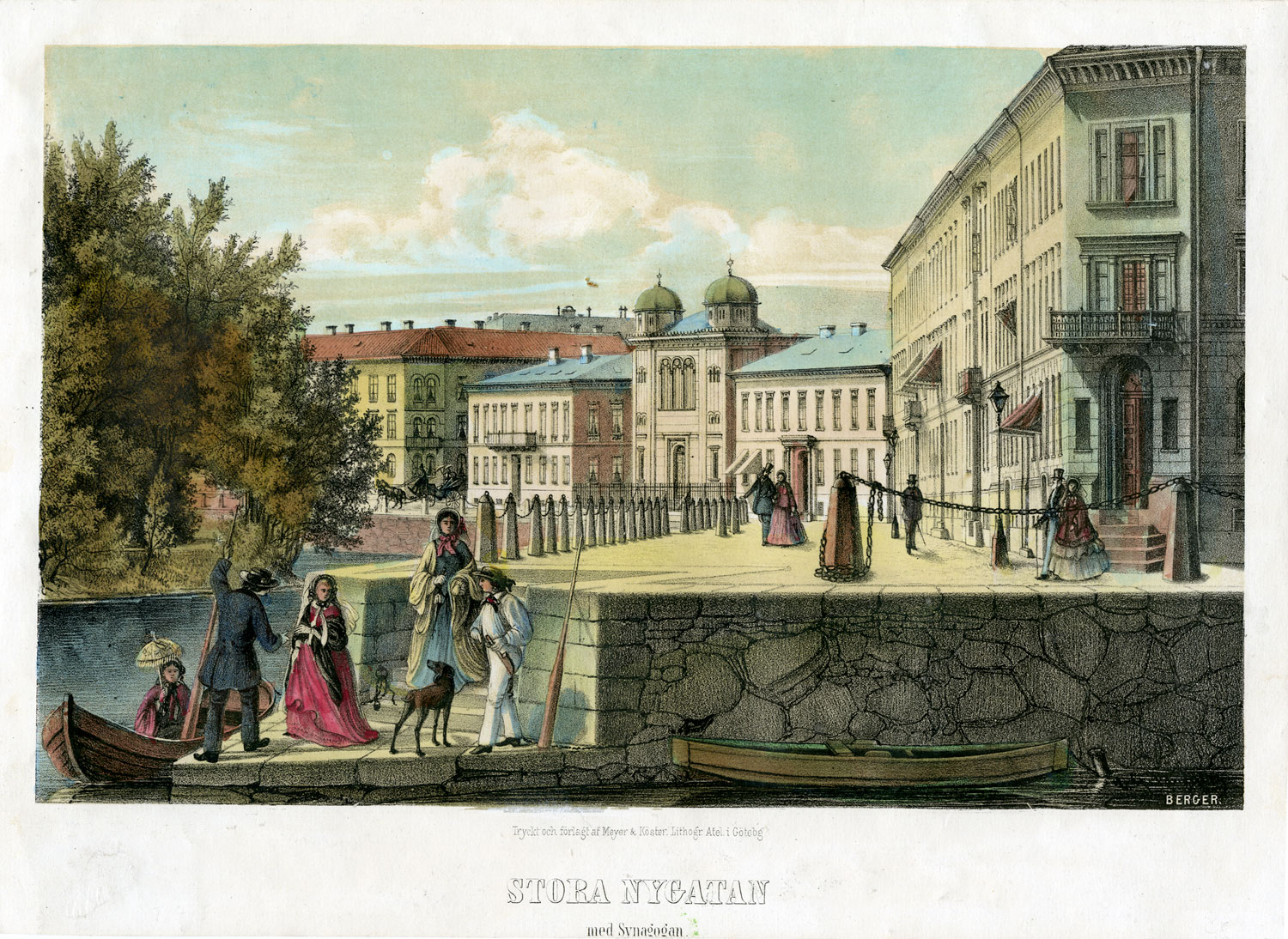The Gothenburg Synagogue at Stora Nygatan, near Drottningtorget, Gothenburg, Sweden, was designed by German architect August Krüger and built in 1855. This view of the synagogue comes from the 1859 publication Göteborg med dess omgifningar framställdt i taflor (Gothenburg and its environs in pictures); from the text accompanying the lithograph, one learns a great deal about both the street and the synagogue site.
The street itself came into existence only a few years before the synagogue was built; the text notes that the place where the row of buildings stands was “ten years ago a complete waste, and another ten years back you might have seen children playing here on the old fortifications.” In fact, the first house on the street dates to 1850. The building of a new synagogue on a former wasteland as part of the city’s expansion recalls the origins of Amsterdam’s great synagogues, a process to be repeated in many cities in Europe and America.
The public nature of the synagogue’s location on the new street is evident in both text and image. The text points to the synagogue’s location in front of a moat, on the opposite side of which are the Horticultural Society’s public gardens. This type of scenic location was increasingly common for new synagogues in Europe and the United States in the mid-19th century, when these structures came to be seen not only as religious buildings but also as examples of civic architecture. On any given Saturday, one wouldn’t know if the well-dressed people strolling along the canal were headed to the synagogue or to the park—or both.
The synagogue was most prominent during daytime, but cast a distinctive aura at night as well: “On dark nights the wayfarer may see a dim light shining through yonder window…It flows from a lamp which is suspended from above the tabernacle….” The source of illumination described here is the ner tamid, the eternal light set above the ark in every synagogue. The presence of the Gothenburg Synagogue was felt not only by the city’s Jews, but by all citizens who came down this prominent street.
